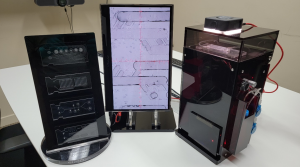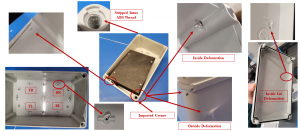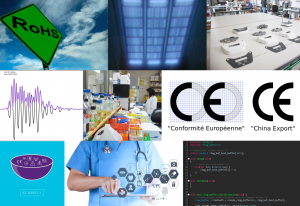 Medical device projects generally have an S-Curve Model curve for costs. Low at the beginning, rising steeply in the middle and then flattening out towards completion.
Medical device projects generally have an S-Curve Model curve for costs. Low at the beginning, rising steeply in the middle and then flattening out towards completion.
To manage costs, effort should always be put into the early stages of a project (or product development) to ensure that the project is as well defined as possible to understand and know the costs up front and then manage those costs through scope management.
This is true of regulatory and Quality Management System (QMS) as well – more effort put into defining and aligning regulatory strategy upfront will pay off by making regulatory approval simpler down the line. Leaving regulatory late to do stuff or changing things at the last minute, is going to have a big impact on your project. The situation is similar for a QMS. Getting things defined as soon as possible will always help a project team.
Quality Management System and Implementation
We ask all new clients “do you have a Quality Management System?” More established companies often have some form of QMS in place and some start ups are able to leverage their parent company QMS, extending it to cover their needs. However, new companies have to bear this cost themselves.
Implementing a QMS alongside the development of the product is the best way to avoid hidden costs. Start with the core product development processes to ensure that records are captured correctly as the product is developed and then work outwards from there.
Medical Device novices often think that when they buy an external quality management system, their QMS is solved. But adapting a QMS to their project or product development takes a lot of effort. Most times, startups don’t accurately anticipate the effort needed. There is a lot of effort and hidden resource cost.
You don’t only write your procedures, but you have to actually use them to generate records to demonstrate that your QMS is functioning. This is often a project in its own right which needs to be budgeted with resources allocated accordingly.
Manufacturers come for a specific claim or a smaller product and tell us, “We have a digital quality management system and everything in place.” Implementing and adapting the external QMS usually requires more time than they handle internally. They must engage a consultant and ask a third party (often StarFish) to do everything.
The entire organisation will need to work within the QMS, so the project must consider all stakeholders internal and external to the organisation and make sure their needs are met. Once implemented, processes will always require refinement. Starting early ensures minimal impact on product development.
Staff training for the QMS implementation can add up depending on the number of processes and staff to be trained.
Regulatory Path Classification Changes
510(k) clearance is authorisation from the FDA to market a medium-risk medical device, while PMA (premarket approval) is required for more high-risk and novel.[i] Perhaps you think your device is Class 2 in the US, and the 510(k) will cost $20,000 dollars. Instead, the device turns out to be a PMA, which costs almost half a million dollars for the application.
Or perhaps you make a submission to the FDA, then tell your investors they could expect clearance in 90 days. But the FDA comes back with questions related to tests you haven’t conducted and compliance you didn’t know you needed. As a result, you will be chasing your tail and possibly make investors less confidant. Doing a little more work at the front end to deliver a better submission would have saved all sorts of pain and cost.
The regulatory pathway is a key area of scope definition for medical devices. Associated with this is understanding the intended use and indications for use of the device. Regulatory strategy is closely linked with business strategy in the intended markets of distribution (e.g. USA, Canada, EU, etc.) and whether the product will be used (e.g. at home use by consumers, or at a clinical setting by trained healthcare practitioners).
Changing any of the assumptions made when determining the regulatory strategy can significantly change the regulatory pathways which are available or appropriate. This, in turn, has a significant impact on the expectations for proving safety and efficacy of the product and supporting documentation.
To develop a medical device, (even if you are a virtual company relying on other parties to create and manufacture your product) you will need to comply with the expectations of ISO13485:2016, FDA’s Quality System Regulations (QSR) or the EU’s MDR/IVDR QMS requirements before you can put your product on the market.
In summary, the regulatory path and QMS should always be defined in the early stages of a medical device project (or product development) to avoid common medical device regulatory and QMS hidden costs.
[i] https://www.cognidox.com/blog/fda-submission-process-510k-vs-pma
Image: Can Stock Photo / AndreyPopov
Helen Simons is a Quality Assurance Manager at StarFish Medical. Helen’s education is in Mechanical engineering, with a background of product development and QMS development across multiple industries with consumer and industrial products to medical devices, IVD and combination devices.
- SEO Powered Content & PR Distribution. Get Amplified Today.
- PlatoData.Network Vertical Generative Ai. Empower Yourself. Access Here.
- PlatoAiStream. Web3 Intelligence. Knowledge Amplified. Access Here.
- PlatoESG. Automotive / EVs, Carbon, CleanTech, Energy, Environment, Solar, Waste Management. Access Here.
- BlockOffsets. Modernizing Environmental Offset Ownership. Access Here.
- Source: https://starfishmedical.com/blog/avoiding-common-medical-device-regulatory-and-qms-hidden-costs/
- :has
- :is
- $UP
- 000
- 200
- 2016
- 300
- 8
- 90
- a
- Able
- accordingly
- accurately
- across
- actually
- add
- aligning
- All
- allocated
- alongside
- always
- an
- and
- anticipate
- any
- Application
- appropriate
- approval
- ARE
- AREA
- AS
- associated
- assumptions
- At
- authorisation
- available
- avoid
- avoiding
- back
- background
- BE
- Bear
- before
- Beginning
- BEST
- Better
- Big
- budgeted
- business
- business strategy
- but
- buy
- by
- CAN
- Canada
- captured
- change
- Changes
- changing
- claim
- class
- classification
- clients
- Clinical
- closely
- COM
- combination
- come
- comes
- Common
- Companies
- company
- completion
- compliance
- comply
- conducted
- Consider
- consultant
- consumer
- Consumers
- Core
- correctly
- Cost
- Costs
- could
- cover
- create
- curve
- Days
- defined
- defining
- definition
- deliver
- demonstrate
- Depending
- determining
- develop
- developed
- Development
- device
- Devices
- digital
- Display
- distribution
- do
- documentation
- doing
- dollars
- Dont
- down
- e
- Early
- Education
- efficacy
- effort
- end
- engage
- Engineering
- ensure
- ensures
- Entire
- established
- etc
- Ether (ETH)
- EU
- Even
- everything
- expect
- expectations
- extending
- external
- fda
- For
- form
- from
- front
- Front end
- functioning
- generally
- generate
- getting
- going
- Half
- handle
- Have
- healthcare
- help
- Hidden
- high-risk
- Home
- However
- HTML
- HTTPS
- i
- if
- Impact
- implementation
- implemented
- implementing
- in
- indications
- industrial
- industries
- instead
- intended
- internal
- internally
- into
- Investors
- IT
- ITS
- jpg
- Key
- Know
- Last
- Late
- leaving
- less
- Leverage
- Line
- linked
- little
- Lot
- Low
- made
- make
- Making
- manage
- management
- management system
- manager
- Market
- Markets
- max-width
- mechanical
- mechanical engineering
- medical
- medical device
- medical devices
- met
- Middle
- million
- million dollars
- minimal
- minute
- more
- most
- multiple
- must
- Need
- needed
- needs
- New
- novel
- novices
- number
- of
- off
- often
- on
- once
- only
- or
- organisation
- Other
- out
- own
- Pain
- parent company
- parties
- party
- path
- pathway
- Pay
- perhaps
- photo
- Place
- plato
- Plato Data Intelligence
- PlatoData
- player
- possible
- possibly
- procedures
- processes
- Product
- product development
- Products
- project
- projects
- put
- quality
- Questions
- records
- regulations
- regulatory
- regulatory approval
- related
- relying
- require
- required
- Requirements
- requires
- resource
- Resources
- result
- right
- rising
- Safety
- scope
- setting
- Share
- should
- significant
- significantly
- similar
- Simple
- situation
- smaller
- So
- some
- Soon
- specific
- Staff
- stages
- stakeholders
- Starfish
- start
- Starting
- Startups
- stock
- Strategy
- submission
- SUMMARY
- Supporting
- sure
- system
- takes
- team
- tell
- tests
- than
- that
- The
- their
- Them
- themselves
- then
- There.
- they
- things
- Think
- Third
- this
- those
- Through
- time
- times
- to
- towards
- trained
- Training
- true
- TURN
- turns
- understand
- understanding
- UPS
- us
- USA
- use
- used
- usually
- Video
- Virtual
- Way..
- WELL
- when
- whether
- which
- while
- will
- with
- within
- Work
- would
- write
- you
- Your
- youtube
- zephyrnet












